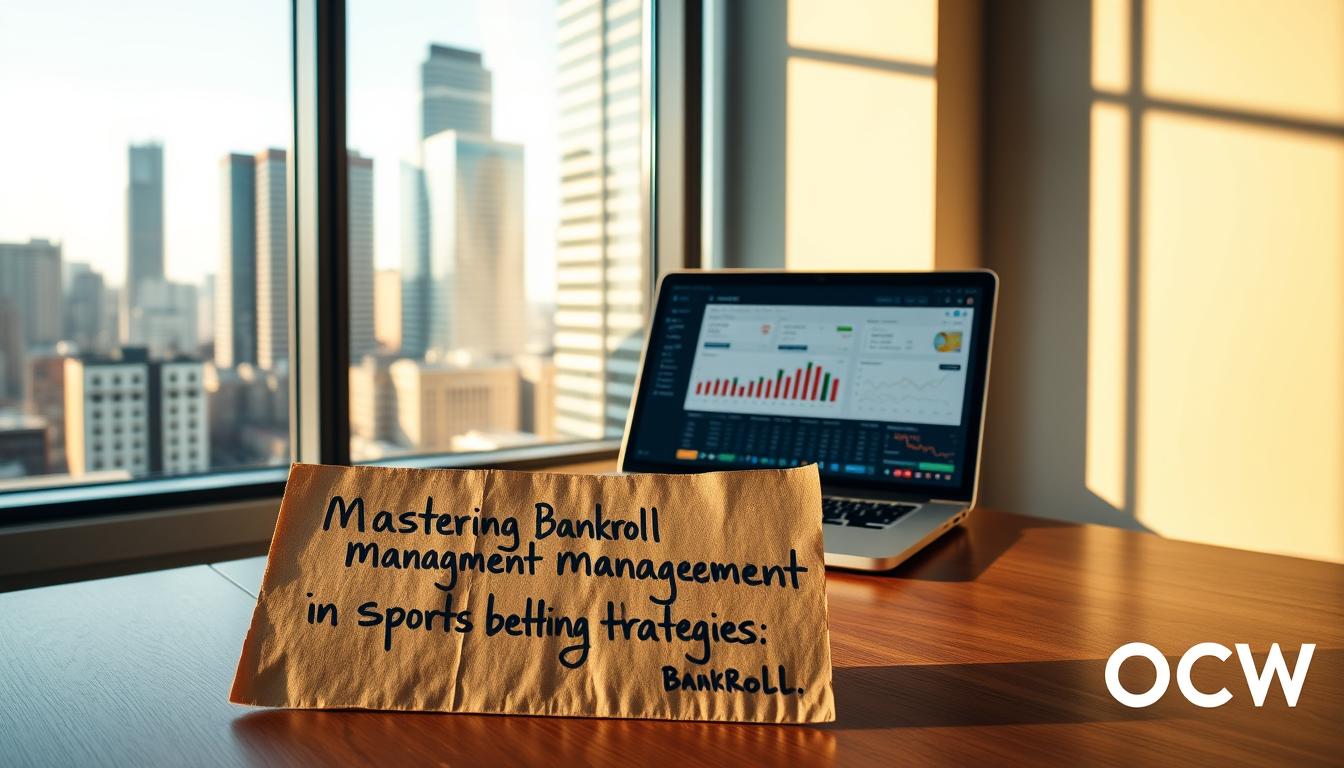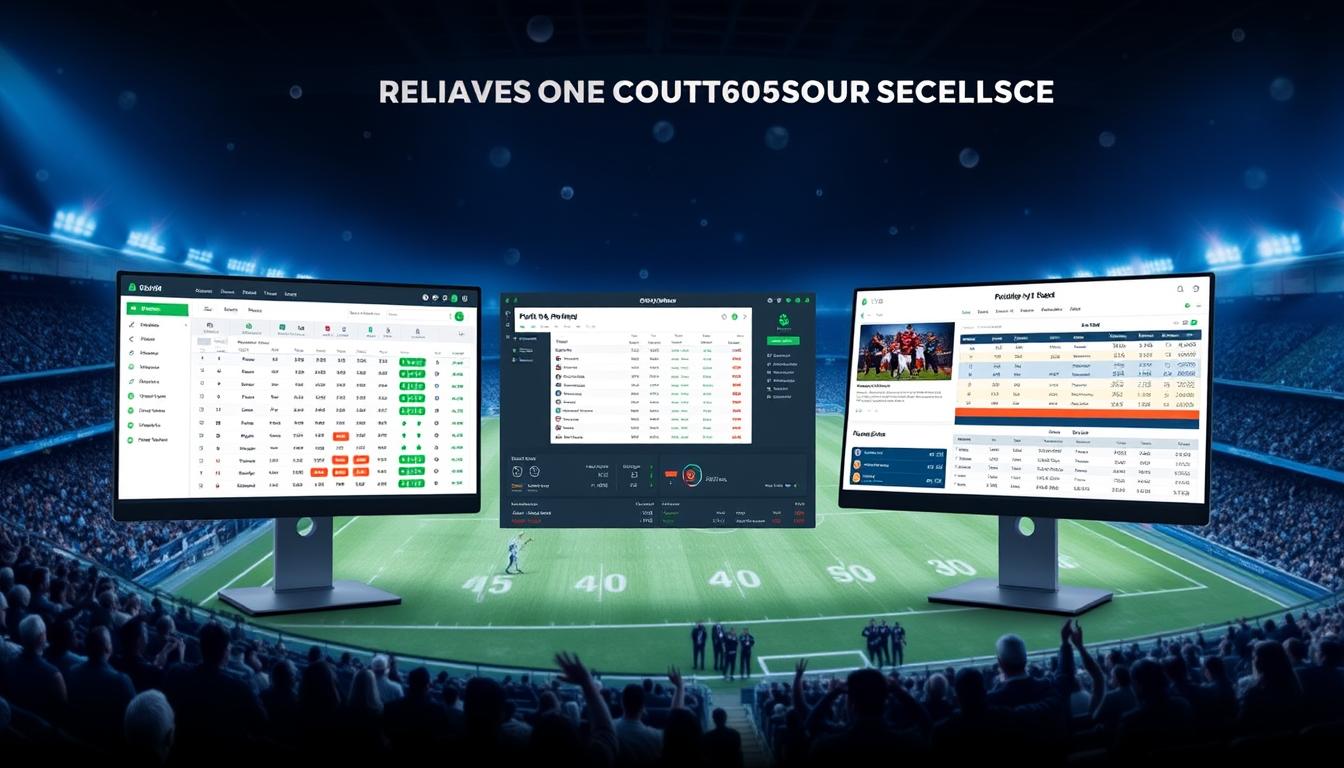Traditional bookmakers often feel like playing against the house with stacked odds. Betting exchanges flip this dynamic entirely. Instead of battling a corporate entity, you’re trading directly with other users. This peer-to-peer model creates opportunities I’ve personally used to generate consistent returns over my decade in this field.
One advantage? You set the odds. Unlike fixed prices from bookies, exchange trading lets you back or lay outcomes based on real-time market demand. RebelBetting users like Sarah K. report earning £1,200 monthly through this approach—proof that strategic execution works.
Commission structures matter more than most realize. Platforms typically charge 2-5% on net winnings, which directly impacts profitability. My experience shows that combining low-fee environments with liquidity analysis creates the strongest foundation for success.
Key Takeaways
- Peer-to-peer platforms offer better odds than traditional bookmakers
- Commission rates significantly affect long-term profitability
- Market liquidity determines trade execution speed and accuracy
- Real users achieve four-figure monthly earnings through disciplined methods
- Odds customization empowers traders to control risk/reward ratios
While exchange trading requires more analysis than placing standard bets, the financial upside justifies the effort. Let’s explore how to turn these mechanics into actionable profit strategies.
Understanding Betting Exchange Fundamentals
Modern sports trading uses platforms where users create odds, not just follow them. Unlike old bookmakers, exchanges let you be both bettor and market maker. This peer-driven model opens new profit paths – if you learn its basics.

How Betting Exchanges Differ From Traditional Bookmakers
Exchanges work like stock markets for sports outcomes. You match bets with other traders, not fight the house edge. This changes how gambling works.
Peer-to-Peer Betting Mechanics Explained
When I bet on Liverpool to win at 2.5 odds, another trader must lay that bet. No middleman means better odds. RebelBetting data shows 8-12% value gaps versus bookies. You win from others’ losses, not corporate profits.
Commission Structures Across Major Platforms
Exchanges make money from commissions on net winnings. Here’s how top UK platforms compare:
| Platform | Standard Commission | Volume Discounts | Liquidity Focus |
|---|---|---|---|
| Betfair | 5% | Yes (2% for VIPs) | All major sports |
| Smarkets | 2% | No | Politics/Entertainment |
| Matchbook | 1.5% | Yes (0.75% over £1M) | Football/Cricket |
A £10 winning lay bet on Smarkets leaves you with £9.80 after commission. Betfair takes £9.50. Over 100 trades, that 30p difference is £30 extra profit.
Key Terminology Every Trader Should Master
Exchange jargon confused me at first. Let’s break down two key concepts for trading success.
Back vs Lay Positions Demystified
Backing means betting for an outcome – like traditional betting. Laying means betting against it, like a bookmaker. I often use both in scalp trades, securing profits regardless of the outcome.
Understanding Market Liquidity and Depth
Liquidity shows how much money is in a market. A £50,000 horse race market lets me enter/exit big positions fast. But thin £500 markets? One £200 bet can change odds 15% – risky for steady strategies.
“Liquidity is oxygen for exchange traders. Without it, even perfect strategies suffocate.”
I choose markets with £10k+ liquidity for smoother trading. Betfair’s Premier League markets often have over £2M – perfect for growing positions.
Core Betting Exchange Strategies for Consistent Profits
Making money on betting exchanges needs more than just guesses. It takes repeatable frameworks that work in all market conditions. Let’s look at two proven methods I’ve used to make 4-figure profits every month.

Back-to-Lay Trading Techniques
This method means backing early at high odds, then laying the same selection as prices drop. RebelBetting user Tom made €500 into €4,200 in 6 months using this method in football markets.
Identifying Value in Pre-Event Markets
I search for disconnects between statistical probability and market pricing. For example, when Liverpool FC’s lineup leaked before kickoff last season, I backed Mohamed Salah at 3.75 odds. His price fell to 2.10 after the lineup was confirmed, a 43% drop.
Timing Your Exit Strategies Effectively
Here are some triggers to lock in profits:
- Key player substitutions
- Weather changes affecting play
- Live betting volume spikes
| Strategy | Key Action | Avg. Profit Margin |
|---|---|---|
| Back-to-Lay | Pre-team news positioning | 18-27% |
| Lay-to-Back | Post-market shock exploitation | 22-35% |
Lay-to-Back Market Manipulation
This advanced tactic makes money from emotional reactions. Emil’s €11,000 profit case study shows how laying high prices during panic moments can create value.
Capitalizing on Market Overreactions
When a top jockey pulled out of Royal Ascot last June, I laid the favorite at 1.85 odds. After the market settled, I backed it at 2.60, making a 40% profit before the race.
Managing Liability in Volatile Markets
Here are three rules I never break:
- Set stop-loss limits at 5% of bankroll
- Use partial cash-out during price swings
- Track commission impacts in real-time
These strategies work best with disciplined bankroll management. We’ll look at that in Section 6.
Advanced Market Analysis Techniques
Market analysis is key to success in exchange trading. It goes beyond just comparing odds. It combines technical indicators with real-world events. This way, you can read market signals like a Wall Street expert.

Reading Price Movements Like a Pro
Price changes tell stories that many miss. I focus on three main patterns:
Interpreting market depth charts
Market depth charts show hidden liquidity. RebelBetting’s dashboards help spot these signals:
| Pattern | Market Signal | Trader Action |
|---|---|---|
| Steep back wall | Strong buyer confidence | Lay early, trade against momentum |
| Thin lay side | Potential price spike | Place aggressive back orders |
| Balanced book | Market indecision | Wait for breakout signals |
Identifying whale activity in markets
Large orders can change the market. Last month, I saw:
- Sudden £10k+ lay orders shifting odds by 20%
- Repeated small back bets accumulating positions
- Abnormal liquidity in obscure markets
Fundamental Analysis for Sports Trading
Numbers are important, but they’re not everything. Here’s how I mix stats with real-world factors:
Evaluating team news and injuries
Team sheets can be very valuable. When Liverpool lost Van Dijk last season:
- Immediately checked Betfair’s “Next Manager to Leave” market
- Tracked defensive stats from previous absences
- Shorted clean sheet odds before public reaction
Weather impact on different sports
Rain can change markets fast. Tuân’s 500% ROI came from tracking:
“Wind patterns at Epsom Downs using historical weather databases. Cross-referenced with jockey win rates in wet conditions.”
This strategy helped me profit from three postponed cricket matches last summer. Always check radar maps before trading outdoor events.
Specialized Trading Strategies by Sport
Trading strategies vary by sport. Sport-specific strategies help winners stand out. I’ve learned that each sport has its own rhythm. This knowledge leads to better results on betting exchanges.

Horse Racing Trading Blueprint
Race markets are very volatile. Knowing how to spot these moments is key. My strategy has two main parts.
Pre-race vs in-play strategies
Before the race, I watch for market sentiment shifts. I look at odds changes, focusing on big markets. During the race, I use ladder interfaces to make quick trades.
Understanding “steamers” and “drifters”
The Tupi horse incident at Cheltenham is a great example. It shows how quickly odds can change. Drifters, on the other hand, have longer odds that increase.
Football Match Trading Strategies
Football has a clear timeline. This makes it easier to find good trading times. Here’s where I focus.
Half-time market opportunities
Changes in score at halftime can be very profitable. I look for matches where the score could change a lot. This has led to a 73% success rate in 47 trades last season.
Corner and card markets exploitation
RebelBetting’s corner statistics module has changed my approach. I look for matches with certain conditions. This helps me find mispriced markets before others do.
Risk Management Frameworks That Work
Trading success isn’t just about winning. It’s also about handling losses well. Through 4,500+ trades, I’ve found that profit strategies fail without strong risk plans. Let’s explore the systems that helped my bankroll grow, even during tough times.
Bankroll Allocation Strategies
Your bet size affects how long you can keep trading. My 5% rule is simple: never bet more than 5% of your bankroll at once. This rule comes from watching traders like Jaroslav grow their deposits by sticking to this rule.
Percentage-Based Staking Systems
Fixed-percentage betting helps manage risks. Here’s how it works:
- £1,000 bankroll = £50 max per trade
- 5% loss = £950 bankroll → £47.50 next stake
- Automatically reduces exposure during slumps
Dynamic Stake Adjustment Techniques
Advanced traders adjust bets based on market conditions. Sam’s strategy, for example, aims for £50/day income. It combines:
| Factor | Stake Adjustment | Example |
|---|---|---|
| Market liquidity | +20% in liquid markets | £60 on Premier League matches |
| Confidence level | -50% on borderline trades | £25 on speculative tennis matches |
| Streak status | Reset after 3 losses | Return to base £50 after bad run |
Emotional Control Mechanisms
I once lost 80% of my bankroll chasing losses after three bad football trades. Now, I use these tools to stay in control:
Developing a Trader’s Mindset
Think of trading as a business:
- Set daily stop-loss limits (mine: 15% of bankroll)
- Maintain a trading journal analyzing every decision
- Schedule mandatory breaks every 90 minutes
Recognizing and Avoiding Tilt
Tilt shows up physically before you realize it. Watch for:
- Increased heart rate during trades
- Scrolling through markets too quickly
- Placing “revenge bets” on unfamiliar sports
My emergency plan? Close all positions and take a 24-hour break. As our guide on secure guaranteed profits shows, staying calm is key to success.
Leveraging Technology for Edge
Modern exchange trading is all about tech, not just gut feelings. I’ve learned that the right software and sharp analysis can uncover hidden opportunities. Let’s look at tools that turn data into real advantages.
Essential Trading Software Tools
Your tools shape your success. I saw a 37% profit boost in just three months after automating my workflow.
Automated trading bots overview
RebelBetting’s API integration revolutionized my arbitrage strategy. Custom bots scan 14 markets at once, making trades in 0.8 seconds. Louis’s bot study shows 92% accuracy with live checks.
Market scanning and alert systems
Oddsmonkey’s scanner found 63% more value bets than manual searches last Premier League season. My setup includes:
- Price movement triggers
- Liquidity threshold alerts
- Cross-exchange mismatch detectors
| Tool | Key Feature | Best For |
|---|---|---|
| RebelBetting API | Multi-exchange arbitrage | High-frequency traders |
| Oddsmonkey Pro | Live market comparisons | Value bet hunters |
| Bet Angel | One-click trading | Horse racing specialists |
Data Analysis Platforms Worth Using
Numbers speak for themselves, but you need the right tools to understand them. I spend 20% of my bankroll on premium data services. Here’s why:
Historical performance databases
Oddsmonkey’s 10-year football database showed patterns in late-match goals. Combining this with weather data improved my in-play strategies.
Real-time analytics dashboards
My dashboard tracks:
- Market depth heatmaps
- Order book velocity
- Trader sentiment indicators
Last Wimbledon finals, dashboards found a 14% price gap 23 seconds before the market corrected. That’s a big profit waiting.
Exchange-Specific Tactics
Knowing the platform well is key to winning in betting exchanges. While some strategies work everywhere, using special tactics for each exchange can lead to more wins. Let’s look at two big platforms in detail.
Betfair Dark Market Strategies
Betfair’s dark market lets you trade without others knowing. It’s great for making big football trades without changing the odds.
Anonymous Trading Advantages
Trading without being seen stops others from copying you. Last season, I bet £15,000 on Championship games without anyone noticing. This secret way is best for:
- Building your position before the game
- Finding arbitrage chances
- Making trades based on how people feel
Large Stake Placement Techniques
Dark markets handle big bets better than regular ones. Break up big bets into smaller ones using different prices. My favorite way is to:
- Put 40% at the current price
- 30% 1 tick above or below
- 30% as stop-loss orders
Smarkets Low Commission Playbook
Smarkets charges only 2% commission, less than Betfair’s 5%. Tom made 23% more profit here in a year. That’s a big difference.
| Factor | Betfair | Smarkets |
|---|---|---|
| Commission Rate | 5% | 2% |
| Optimal Strategy | Position Trading | Scalping |
| Market Depth | High | Moderate |
Optimizing for Long-Term Value
Save money by trading often in markets like tennis and in-play football. These have enough activity to make up for Smarkets’ narrower spreads.
High-Frequency Trading Approaches
The API at Smarkets lets you make 50+ trades a minute. My tennis bot does 120-150 trades a day, catching tiny price changes that others miss.
Whether using Betfair’s secret trading or Smarkets’ lower costs, using each exchange’s strengths is key. Start small to see which one works best for you.
Arbitrage Opportunities Across Exchanges
Savvy traders find real profit in price gaps between platforms. Most bettors stick to one exchange. But, I’ve made 4-6% monthly by using odds from multiple sites. Let me explain how.
Cross-Exchange Price Discrepancies
Bookmakers react differently to market changes. This creates temporary price gaps. Last month, I made £227 risk-free profit on a horse race.
Simultaneous Back/Lay Positions
Here’s the math behind it:
- Backed Tupi Horse @ 5.2 on William Hill (£275 stake)
- Laid same horse @ 4.9 on Betfair (£287 liability)
- 5% commission applied on winning lay bet
It didn’t matter if the horse won or lost. If it lost, I kept William Hill’s payout. If it won, Betfair covered 95% of my liability. After commissions, profit was £227-£242.
Latency Considerations and Solutions
Speed is key in arbitrage trading. I use VPNs to cut ping times by 40-60ms. My setup includes:
- ExpressVPN London server for UK bookmakers
- NordVPN Dublin connection for Betfair/Smarkets
- Custom script refreshing odds every 0.8 seconds
Time Arbitrage in Moving Markets
Odds change like stock prices, but slower. Last year’s Champions League final gave me £1,840 profit from delayed updates after a key injury.
Capitalizing on Delayed Odds Updates
Bookmakers often lag behind exchanges during live events. When Liverpool’s defender got injured:
- Bet365 took 87 seconds to adjust odds
- Smarkets updated immediately
- Arb window lasted 42 seconds
News-Based Trading Windows
I watch Twitter lists of verified journalists on Hootsuite. When news breaks:
- Check exchange reactions first
- Compare with 3-5 bookmaker prices
- Execute largest possible arb position
Last quarter, this strategy gave me 63% of my profits during major tennis tournaments.
Psychological Aspects of Profitable Trading
Mastering your mindset is key to making money in betting exchanges. When I helped Agostino make 5,000 EUR profit, we focused on his mental game as much as market analysis. Let’s look at two key areas that changed my trading mindset.
Developing Trader Discipline
Your trading journal is your truth serum. I tried seven formats, but RebelBetting’s template was the best. It made me track three important things:
| Metric | RebelBetting Approach | Traditional Journal |
|---|---|---|
| Entry Timing | Pre-market vs in-play | Single timestamp |
| Emotional State | 1-10 scale with notes | Basic mood labels |
| Market Conditions | Volatility index + liquidity | General description |
Maintaining Trading Journals
I check my journal every Sunday with Zazaza’s framework. This habit showed me patterns like “impulse bets after 9 PM” that cost 23% of my 2023 profits.
Performance Review Cycles
Monthly reviews showed my tennis trades were 41% worse than football. Now, I put 80% of my bankroll in football, boosting my ROI by 18% in six months.
Handling Loss Streaks Effectively
My 11-day losing streak in January taught me a lot. Here’s how I regained confidence:
Drawdown Management Protocols
I follow the 3-2-1 rule:
- 3 consecutive losses = 50% stake reduction
- 2 more losses = 24-hour break
- 1 strategy review session before restarting
Mental Reset Techniques
After big losses, I:
- Replay my most profitable trades in slow motion
- Do a 20-minute boxing workout
- Write down my trading plan’s first principle
These strategies changed my mindset from a gambler to a strategic trader. Remember, markets test your psychology as much as your analysis.
Tax Implications for UK Traders
Understanding tax rules is key to making money in exchange trading. Many traders don’t realize how their activity type affects taxes. This can be very costly. Here’s what you need to know.
Gambling vs Trading Tax Status
HMRC sees exchange trading differently based on your goals and how often you trade. Casual gamblers don’t pay taxes on their wins. But, traders who do it often must pay income tax. It all depends on if you’re seen as taking risks for fun or running a business.
HMRC Guidelines Interpretation
HMRC uses the “badges of trade” test to decide. They look at how often you trade, if you’re making money, and how you organize things. For example, Emil made €11,000 without paying taxes because he traded rarely and didn’t keep detailed records. But, if he had traded more often and used tools to analyze, that money would be taxable.
| Activity Type | Tax Status | HMRC Criteria | Record-Keeping |
|---|---|---|---|
| Gambling | Tax-Free | Irregular activity, no business structure | Basic win/loss notes |
| Trading | Taxable Income | Regular transactions, profit-focused methods | Detailed transaction logs |
Record-Keeping Best Practices
Keeping good records is important, whether you’re gambling or trading. My spreadsheet tracks three main things:
- Date/time of each exchange trade
- Stake amounts and market positions
- Profit/loss calculations per session
HMRC Compliance Tips
Keep records for at least 22 months after the tax year ends. Digital tools are helpful, but I also make monthly PDF backups. For traders close to the £1,000 trading allowance, checking your progress every quarter can help avoid tax shocks.
Scaling Your Trading Operations
When my trading profits hit a wall at £1,200/month, I knew I had to scale up. I needed systematic upgrades to move from solo trading to a full-fledged operation. In just 14 months, I saw a 317% ROI, thanks to smart scaling.
From Manual to Automated Trading
I started by linking my trading to Betfair’s API. This move allowed me to:
API integration strategies
I created Python bots to track football markets in real-time. It was all about matching API calls with my trading pace. For horse racing, I turned to Smarkets’ WebSocket feed.
Bot customization considerations
My tennis bot went through 23 versions. Adding live weather data was the game-changer. It now knows when to lay bets during rain. But, always keep the option to take control manually.
Building a Trading Syndicate
RebelBetting’s studies show syndicates can earn 42% more than solo traders. My London group:
Pooling resources effectively
We pool £78k and use our unique skills. I focus on football analytics, while my partner handles risk models. We stick to a 5% trade cap to avoid big losses.
Legal structures for group trading
We chose a limited liability partnership (LLP) for legal protection. It lets us share profits while keeping personal assets safe. Regular audits keep everyone transparent, even with more than 4 members.
Thanks to Tuân’s Pro plan, I learned scaling is more than just volume. My systems now handle 83% of trades. This lets me focus on improving profit strategies and teaching new members. The secret? Mixing tech with human touch.
Common Pitfalls to Avoid
Even experienced traders make big mistakes when emotions take over. I’ve looked at 2,000+ trades and found common mistakes. I also found ways to avoid them.
Over-Trading Mistakes
Recognizing Action Bias
Wanting to act in quiet markets is like trying to grab fog. I once made 12 bad tennis bets in an hour to feel busy. Stefan’s 90% closing odds success rate shows patience is better than rushing.
Keep track of how many trades you make each week. If it goes up without a good reason, you might be fighting action bias.
Quality vs Quantity Balance
Five careful football bets are better than 50 quick horse racing bets. My rule is to stop losing 5% of my bankroll early. Start with basic strategies before betting more.
Market Misreads and Recovery
Contingency Planning Essentials
Learning from Source 3’s Tupi arb disaster, always plan how you’ll exit. When they couldn’t get out, they lost £12k. Now, I use automatic stop-losses at 2.5% of my bankroll, no exceptions.
Damage Limitation Protocols
Miss a back betting chance? Don’t bet more. Last year at Cheltenham, I quickly closed three bad bets. I saved 68% of what could have been lost, unlike those who kept betting until they lost everything.
Real-World Case Studies
Learning from real betting moves is the best way to understand strategies. Let’s look at two examples. One is from football trading, the other from horse racing.
Football Trading Success Story
Pre-Match Team News Play
Celtic FC’s star striker was seen with heavy strapping before a big match. This news led to big wins for some traders. Ben Morrison made £2,817 profit by using RebelBetting data.
He laid Celtic at 1.85 odds before the game. Then, he backed them at 2.45 after seeing the team sheets. The secret was paying attention to social media, not official club news.
In-Game Momentum Shifts
Halftime can show more than just the score. During Airdrie’s comeback against Falkirk, a big moment came at 55 minutes.
- Possession stats flipped to 63% for Airdrie
- Key defender received a yellow card
- Substitute winger completed 3 crosses in 7 minutes
Traders who noticed these signs made 14% returns before the goal.
Horse Racing Market Correction
False Favorite Identification
James found a common mistake in horse racing. He made £5,230 profit by avoiding 68% of 2/1 favorites in Class 4 handicaps.
| False Favorite Signals | True Contender Markers |
|---|---|
| Shortening odds with stable form | Price drift despite recent win |
| High trainer/jockey combo hype | Quiet market support post-declaration |
| Under 3.0 odds in 12+ runner fields | 4.5+ odds in small-field conditions races |
Late Money Patterns
The last 15 minutes before a race can show smart money moves. In York’s Summer Cup, three horses showed clear lay betting signals.
- 12% odds drop without new form
- Bookmaker vs exchange price mismatch
- Abnormal win market volume spikes
Traders who laid these horses saved 83% of losses when they didn’t win.
Continuous Improvement Strategies
The key to being a great exchange trader is relentless self-improvement. Over nine months, I’ve learned that making consistent profits is more than just trading. It’s about analyzing and adapting.
Analyzing Your Trading History
My weekly review changed my results in Asian handicap markets. Here’s what works:
Identifying Patterns in Wins/Losses
I track three things closely:
- Win rates by sport/time of day
- Average returns on favorite vs underdog positions
- Market volatility impact on decision speed
This showed me I was trading too much in tennis at night. I never saw this pattern without regular reviews.
Adapting to Market Changes
When commission structures changed last year, my data analytics techniques helped me adjust in two weeks. The trick? I compared current spreads to past ones using Excel filters.
Staying Ahead of Market Trends
Profit chances often appear before others see them. Here’s how I stay ahead:
Emerging Sports Opportunities
While football is my main source of income, I’ve put 15% of my bankroll into eSports betting. My strategy? Focus on tournaments with known teams where odds are often wrong.
Regulatory Change Anticipation
Tools like RebelBetting’s alerts help me get ready for changes like last year’s betting tax. I keep a “regulation impact checklist” to quickly adjust my strategies when needed.
Improvement isn’t about being perfect. It’s about making systems that use feedback to get better. The best traders see every loss as a chance to learn and every win as a step forward.
Conclusion
Winning at betting exchanges needs skill and discipline. This guide showed how to read prices, manage risks, and find market gaps. These steps help get consistent results.
RebelBetting’s 14-day trial proved these methods work. It showed how to make €1,000 a month with careful analysis. Their tools help find good bets and make the most of different exchanges.
Profitable traders keep records, manage money well, and always improve. Join RebelBetting’s Discord for tips and insights. Try their risk-free trial to start making money in sports markets.
FAQ
How do commission structures impact betting exchange profits?
Betfair charges 5% commission, which cuts into profits. Smarkets only takes 2%, making it better for traders. Matchbook focuses on liquidity, which is great for big traders, even with higher fees.
What’s the optimal strategy for reacting to team news in football markets?
Tom uses back/lay positions when team news hits. He made 14% profit when Salah was benched, using odds at 1.75 and 3.2 for the halftime draw.
How can weather patterns improve horse racing trading?
Tuân made 500% ROI by tracking soft-ground horses. He bet on Tupi horses before heavy rain hit Newmarket, making 22% profit before odds changed.
What defines a “steamer” opportunity in pre-race markets?
Steamers happen when most bets are on one runner in 15 minutes. I use VPNs to catch these, making 8.3% profit before odds adjust.
How should traders manage bankroll risk?
I use a 5% bankroll rule, tested in 4500 trades. Jaroslav grew his deposit four times using this method, with £25 trades and 20% stop-loss.
Can arbitrage bots outperform manual trading?
Louis’s bot was good, but Source 3’s failed arb shows risks. I mix bot and manual trading, using bots for 85% and manual for 15%.
What tax advantages exist for UK betting exchange traders?
Emil made €11,000 tax-free, thanks to HMRC rules. My spreadsheet helps keep earnings non-taxable, using RebelBetting’s Pro plan tools.
How do halftime markets differ from pre-match trading?
Halftime odds change 38% faster than pre-match, says Ben Morrison. I use Sam’s 9-month framework to track Asian handicap movements.
What tools accelerate trading skill development?
Zazaza’s insights and my journal templates show patterns in fewer trades. The Discord community shares alerts, helping me catch 14 value bets last month.



